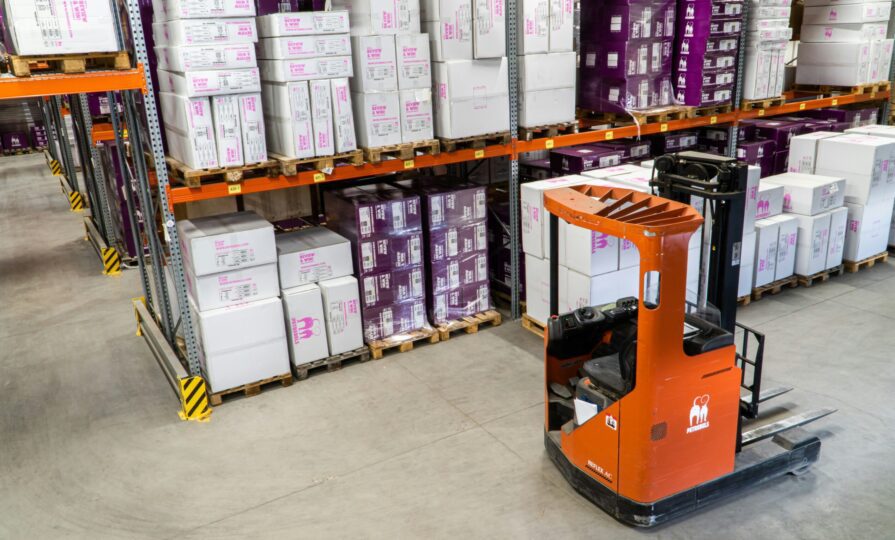How can retailers effectively manage their inventory?

Inventory management stands as a fundamental aspect of effective retail store administration. Situated within supply chain management, its objective lies in overseeing the movement of goods from manufacturers to warehouses and ultimately to the point of sale.
Inadequate inventory management results in inefficiencies due to the absence of reliable real-time data regarding inventory levels. This increases the likelihood of inaccurate ordering from suppliers or selling items that do not actually exist in stock.
Conversely, employing proper inventory management practices can lead to enhanced sales, reduced costs, and improved customer satisfaction. However, lacking appropriate strategies and tools can consume significant time and potentially result in financial losses.
Listed below are a few ways in which retailers can manage their inventory effectively.
Setting clear inventory goals
Setting clear inventory goals is paramount for effective inventory management. Firstly, it provides a roadmap for retailers, guiding them in allocating resources and prioritising tasks. By defining specific objectives such as minimising stockouts, reducing excess inventory, or improving turnover ratios, retailers can align their efforts with overarching business strategies. Clear goals also facilitate performance measurement, enabling retailers to track progress and identify areas for improvement.
Moreover, they promote accountability and foster a proactive approach to inventory management. With well-defined goals in place, retailers can make informed decisions, implement targeted strategies, and optimise inventory levels to meet customer demand while maximising profitability.
Regular checks of inventory
Regular inventory checks and audits are instrumental in maintaining accurate stock records and optimising inventory management for retailers. These checks ensure that physical inventory matches the recorded data, helping to identify discrepancies caused by theft, shrinkage, or errors in recording.
By conducting audits regularly, retailers can detect issues promptly, minimising the risk of stockouts or overstocking. Consistent audits improve inventory accuracy, enabling better decision-making regarding reorder points, stocking levels, and demand forecasting. They also instil confidence in customers by ensuring product availability and reliability.
Investing in powerful inventory management softwares
Investing in a powerful inventory management software offers retailers numerous benefits. Firstly, it provides real-time visibility into stock levels, enabling accurate tracking of inventory across multiple locations and channels. This enhances inventory accuracy and reduces the risk of stockouts or overstocking.
Additionally, such software automates key processes like order management, replenishment, and vendor communication, saving time and reducing human error. Advanced features such as demand forecasting, ABC analysis, and customisable reporting enable retailers to make data-driven decisions for optimal inventory control. Integration with other systems like POS and accounting further streamlines operations and improves overall efficiency. Ultimately, powerful inventory management software empowers retailers to optimise inventory levels, increase sales, and enhance customer satisfaction, contributing to long-term business success.
Tracking sales
By monitoring sales data, retailers can identify patterns and trends in customer demand, allowing for more accurate demand forecasting. This helps in determining optimal inventory levels and reorder points, reducing the risk of stockouts or excess inventory.
Additionally, tracking sales enables retailers to identify top-selling products and slow-moving items, facilitating better inventory allocation and merchandising decisions. Sales tracking also allows retailers to assess the effectiveness of promotions, marketing campaigns, and product placements, enabling them to adjust strategies accordingly.
Streamlining stock receiving process
Streamlining the stock receiving process is essential for efficient inventory management in retail. By optimising the receiving process, retailers can expedite the turnaround time from delivery to shelf, minimising delays in making products available to customers. This efficiency reduces holding costs associated with excess inventory and ensures that stock is replenished promptly, reducing the risk of stockouts.
A streamlined receiving process reduces the likelihood of errors and discrepancies in inventory records, improving accuracy and overall inventory management. Additionally, it enables retailers to allocate resources more effectively, freeing up time and manpower to focus on other critical tasks.
Handling deadstock
Deadstock refers to products that are no longer in demand or cannot be sold due to various reasons such as seasonality, trend changes, or product obsolescence. By promptly identifying and addressing deadstock, retailers can free up valuable shelf space, reduce carrying costs, and minimise the risk of inventory write-offs.
Implementing strategies such as markdowns, promotions, bundle offers, or liquidation sales can help clear deadstock inventory and recover some of the invested capital. Additionally, analysing the root causes of deadstock can inform future purchasing decisions and inventory management strategies, helping retailers avoid similar issues in the future.
Monitoring key performance indicators
KPIs such as inventory turnover ratio, days sales of inventory (DSI), fill rate, stockout rate, and carrying costs provide valuable insights into inventory performance and overall business health. By regularly tracking these metrics, retailers can identify trends, detect potential issues, and make informed decisions to optimise inventory levels and operations.
For example, a high stockout rate may indicate the need to adjust reorder points or replenishment strategies, while a low inventory turnover ratio may signal excess inventory levels that need to be addressed. Monitoring KPIs also helps retailers evaluate the impact of inventory management initiatives, measure progress towards goals, and identify areas for improvement.
Forecasting demand accurately
Forecasting demand accurately is critical for retailers to manage their inventory efficiently. By analysing historical sales data, market trends, and external factors, such as seasonality and promotions, retailers can predict future demand with greater precision. Accurate demand forecasting enables retailers to optimise inventory levels, ensuring sufficient stock to meet customer demand while minimising excess inventory and associated holding costs.
It also facilitates effective replenishment planning and procurement strategies, allowing retailers to streamline operations and reduce stockouts. Additionally, forecasting demand helps retailers anticipate trends and shifts in consumer preferences, enabling proactive adjustments to product assortments and marketing strategies.



